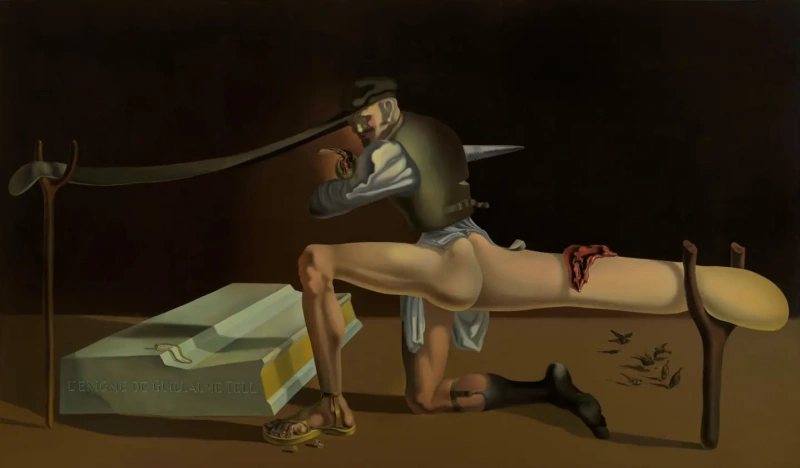Hans Bellmer (German. Hans Bellmer, 13 Mar 1902, Katowice, Upper Silesia, Poland — February 23, 1975, Paris) — German graphic artist and sculptor, photographer, book Illustrator, writer.
At the insistence of his father worked in a steel mill, in the mine, in 1923, enrolled at the Higher technical school in Berlin, where he met with George Grosso and John Heartfield. In 1925 on the advice of Grosso left School and went to Paris, met there with Paul Eluard. Upon returning he opened his own advertising Agency, acted as artist books, illustrated in 1925, a grotesque parody novel Minona (pseudonym of German writer-expressionist Salomon Friedlander, 1871-1946) "Train happiness, or Anti-Freud". Traveled to Italy and Tunisia.
In the 1930s, Bellmer, with the help of a puppet master, artist, costume designer Lotte Pritzel, started working on artisianal way deformed doll, opposing his plan to the official cult of the "Aryan" health and aesthetics of "classical" body in Nazi Germany. In addressing this topic and its further interpretation of Bellmer was influenced by an autobiography of Oskar Kokoschka's "Fetish" (1925), and later work of the Austrian psychiatrist Paul Schilder, "the Image and appearance of the human body" (1935) and the book by French psychiatrist Jean-Lhermitte "Image of our body" (1939).
In 1934, 18 photos of the dolls that caused the admiration of andré Breton, was published in Paris surrealistic magazine "Minotaur". In the same year a series of "Die Puppe" (the Doll) was printed in a small edition in the private publishing house in Karlsruhe no name of the author, who, however, was reckoned after that of Nazi propaganda to degenerate art (in 1936, the book was reissued in Paris, the pictures appeared in the exhibitions of the Surrealists in Paris and new York in 1935-1936). In 1938 Bellmer emigrated to France. In the summer of 1939 as a citizen of Germany, was imprisoned by the French authorities in the camp "Tuilerie des Milles", where, among many, was Leon Feuchtwanger, Max Ernst, artists Ferdinand Springer, vol's, etc. From 1941 to 1944 he lived in southern France (Castres, Toulouse), and then returned to Paris. In 1953 he met in Berlin with the artist and writer Unicoi Zurn, 1954 Zorn became his Parisian girlfriend, a model ("Unica on a string.", 1959, etc.), a co-author in the visual and verbal art (they wrote experimental poetry-heterogamy). In the 1970s experienced a severe stroke, lost the ability to move. Suffering from severe schizophrenia, Turn on release from a psychiatric hospital in 1970, committed suicide.
Exposiciones
Todas las exposiciones del pintorBandeja
Surrealismo. Encuentro de opuestosexhibition finished

Surrealismo. Encuentro de opuestosexhibition added





